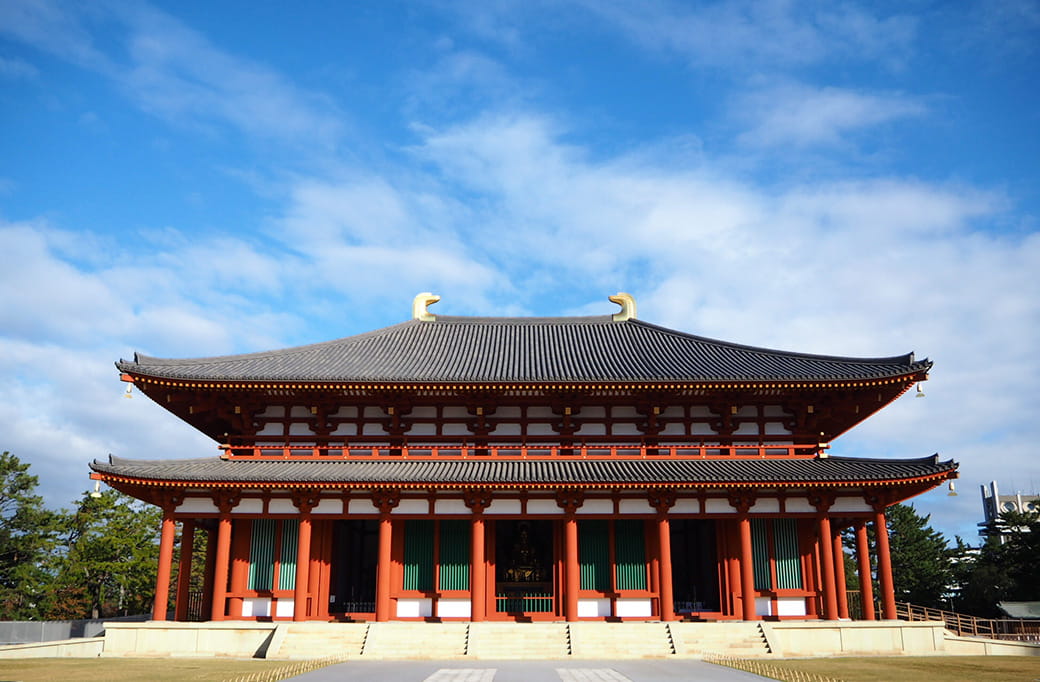Central Golden Hall

Reconstructed in 2018, the Central Golden Hall is both Kohfukuji’s newest building and the most important structure in the temple complex.
The term “golden hall” refers to a structure whose primary function is to enshrine one or more Buddhist icons. Since these images are usually gilded, the light of the candles and oil lamps offered to them reflects off their bodies, causing the building to emit a golden glow that is likened to the Buddhist teaching illuminating the world with the light of wisdom.
Historically, Kohfukuji had three such Golden Halls. The oldest and most important was the Central Golden Hall, so named because it was located between the Eastern and Western Golden Halls at the very center of the temple. Constructed between 710 and 714 at the behest of the founding patron of Kohfukuji, Fujiwara no Fuhito (659–720), the original Central Golden Hall enshrined an image of the historical Buddha Shaka Nyorai (Skt. Śākyamuni) with two attendant bodhisattvas, two images of the Elven-headed Kannon, images of the Four Heavenly Kings, as well as a set of images recreating the heavenly palace of Miroku (Skt. Maitreya), the Buddha of the future.
Over the centuries, the Central Golden Hall burned down a total of seven times. In 1819, more than a hundred years after the most recent of these fires, donations from the people of Nara finally allowed for the erection of a small, temporary hall. By the 1970s, however, this structure had deteriorated to the point that it had to be abandoned, and ultimately demolished completely in the year 2000. Following its removal, a new building that faithfully reproduces both the dimensions and the architectural style of the Nara-period (710–794) original was erected on the site. This new Central Golden Hall, the first full-scale reconstruction in more than three centuries, was consecrated in October 2018 with an elaborate series of rituals and is now open to the public.
The current hall houses an image of Shaka Nyorai dated to 1811, Kamakura-period (1185–1333) sculptures of the Bodhisattvas Yakuō and Yakujō, the deity Daikokuten, and the Four Heavenly Kings, as well an enshrined image of the goddess Kisshōten (Skt. Lakṣmī) that dates to the Nanbokuchō Period (1336-1392). Perhaps the most unique feature of the hall is the so-called “Hossō Pillar,” which is entirely covered in large portraits of the patriarchs of the Hossō School of Buddhism.

